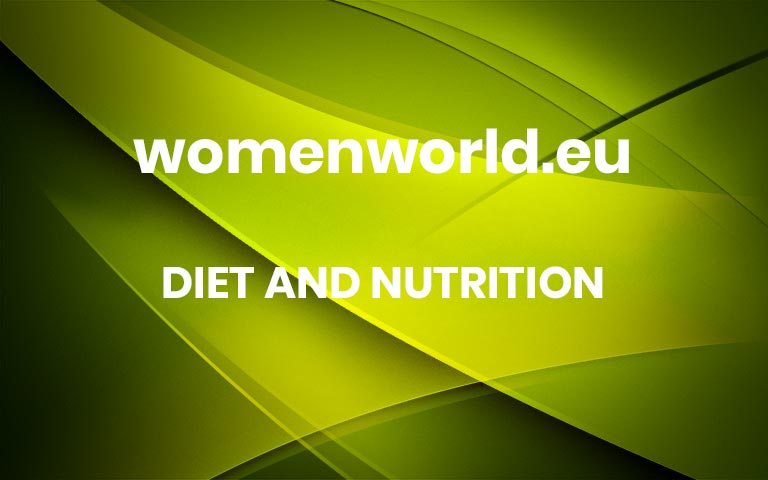Did you know the 2nd of June is National Doughnut Day? Ummmm, now that’s a holiday we can get behind! SO if you’re wanting to celebrate, why not try our delicious air fryer doughnut recipe? And Happy Doughnut Day! 🍩
But First, 10 Things You Should Know About Your Air Fryer
Whether your air fryer has a ton of fancy presets (like fry, dehydrate, roast, broil) or simply offers temperature and time controls, you can make tons of your favourite recipes with some basic know-how. Below are some helpful tips we’ve picked up along the way.
1. It Crisps Up Foods Even Better Than The Oven Does
Most foods baked or roasted in the oven at a consistent temperature (like salmon) work great in the air fryer, which locks in juiciness – while the convection airflow dehydrates the food’s exposed surface area.
2. Get Deep-Fried Results Without Deep Frying
If you’ve ever craved crunchy-coated fried fish tacos for dinner, only to get discouraged by recipes calling for glugs of oil, an air fryer is the answer. You don’t have to use much (or any) cooking oil for deep-fried results, so your recipes are lower in fat and, yes, still crispy.
3. Grease Your Basket
Although air-frying doesn’t require oil to cook with, a little grease can help keep your food from sticking. Dab a little on a paper towel and wipe it over the basket to help keep breaded items from sticking. Use aerosol sprays sparingly as they may cause the nonstick coating to peel off over time. For best results, fill a spray bottle with oil.
READ MORE: Are Air Fryers Actually Healthy Or Am I Kidding Myself?
4. Preheating The Machine Is Unnecessary
Unlike the oven, you don’t need to wait forever for your air fryer to come to temperature. Just throw your food in the basket, set the temperature and let it go.
5. You Need To Cook In Batches
You have to air-fry food in a single layer to ensure that everything cooks evenly, so the size of your air-fryer basket determines how much food you can cook at a time. Basket sizes vary greatly, so check yours to see how many batches you’ll need to cook. Piling food on top of each other results in soggy, undercooked pieces and burnt, overcooked edges. Leave room in your basket so there’s plenty of space for the air to circulate around the food.
6. Air Fryers Can Be A Little Noisy
Traditional frying submerges your food fully in fat; air-frying submerges your food in…hot air. The particular pitch and volume you’ll hear while cooking is dependent on the make and model, but most air fryers sound not unlike a hair dryer blowing inside a closed shoe box.
READ MORE: You Need To Try This Easy Air-Fryer Milk Tart Recipe ASAP
7. Parchment Paper Is An Air-Fryer Basket’s Bff
Most air fryers have grates or holes on the bottom, and that makes wet battered foods tricky – they get stuck and create a big mess. The fix: parchment paper.
8. You Can Cook Almost Anything…
We’re serious. Air-fried foods that we’re obsessed with? Vegetables, panko-breaded everything, burgers, chicken, pork, fish and even brownies!
9. …But Don’t Expect Perfect Results From Everything
Air-frying is not ideal for foods traditionally fried in a wet batter like corn dogs or onion rings. The drippy coating will sink through the air-fryer basket’s grills and solidify during the cooking process, effectively acting as a glue. Instead, make sure battered foods are as dry as possible: We love panko bread crumbs for the air fryer, which act as a barrier, preventing any drips.
10. Avoid Cooking Tiny Items
Because of the intense heat and air that the appliance uses, cutting foods too small can make them easily burn or fly around and get caught in the air fryer. Stick with average bite-size cuts and avoid anything super small.
11. Air-Fry Your Leftovers
The microwave usually zaps life (and crispy textures) from leftovers. The air fryer will revitalise leftover pizza or roast vegetables much quicker than the microwave oven can. The results? Crispy and never soggy leftovers.
READ MORE: This Beetroot Chocolate Cake Is So Moist It Doesn’t Even Need Icing
12. Clean Up Is A Breeze
Forget scrubbing gunk off a large baking sheet. Due to their small size and often nonstick surface, air fryers are typically quick to clean. Make sure your air fryer is unplugged and totally cooled before wiping it down.
Happy National Doughnut Day! Today, we’re celebrating the only way we know how – with a DOZEN reasons to smile!Get a dozen of your fave doughnuts today for only R150!😍 pic.twitter.com/MLgiuzRqEP— Krispy Kreme ZA (@KrispyKreme_ZA) June 2, 2023
Celebrate National Doughnut Day With Krispy Kreme
Okay so maybe you’re wanting to celebrate the day but you don’t have time to try this delicious and healthier recipe?
Then Krispy Kreme has you covered with a dozen of your fave doughnuts for only R150 today! Looooove. Because we all need a cheat day sometimes right? And there’s no better cheat day than National Doughnut Day, we think.
3 Air-Fryer Essentials Recommended By Us
Living by myself, an air-fryer like this has completely replaced my oven. I use it every day!
The most difficult part about using an air fryer? The clean-up process, of course. Not any more.
If you’re just thinking of getting into air-fryer cooking, you can’t go wrong with one like this.
Your Air Fryer Doughnut Recipe, Right Here:
Fluffy Air Fryer Doughnuts
Craving doughnuts but don’t want something totally drenched in oil? This air fryer doughnut recipe is the perfect solution, then!
Total Time 2 hours hrs 40 minutes mins
Course Dessert
Servings 6 people
1 air-fryer
For The Doughnuts½ cup Warm milk¼ cup plus 1 tsp. granulated sugar, divided2¼ tsp Active dry yeast4 tbsp Butter, melted1 Egg, large1 tsp Pure vanilla extract2 cup All-purpose flour½ tsp Kosher saltCooking sprayFor The Vanilla Glaze1 cup Powdered sugar¼ cup Milk½ tsp Pure vanilla extractFor The Chocolate Glaze¾ cup Powdered sugar¼ cup Unsweetened cocoa powder3 tbsp MilkFor The Cinnamon Sugar½ tbsp Granulated sugar2 tbsp Ground cinnamon2 tbsp Butter, melted
To Make DoughnutsIn a small bowl, combine milk and 1 tsp. sugar, stir to dissolve. Sprinkle yeast over mixture and let sit until frothy, about 8 minutes.In a large bowl, whisk together remaining ¼ cup sugar, butter, egg and vanilla. Pour in yeast mixture, add flour and salt, and stir to combine.Transfer dough to a lightly floured surface and knead until elastic and only slightly tacky. Form into a ball. Grease a large bowl with cooking spray, add dough, and cover with a clean dish towel. Let dough rise in a warm spot until doubled in size, about 1 hour.Line a large baking sheet with parchment paper and grease lightly with cooking spray. Punch down dough, then turn onto a lightly floured work surface and roll out into a 5cm-thick rectangle.Using a donut cutter or 7cm and 2.5cm biscuit cutters, punch out your doughnuts. Knead the scraps together, reroll and punch out more doughnuts. Place doughnuts and holes onto baking sheet, cover with a dish towel and let rise again, 40 minutes to 1 hour more.Grease air-fryer basket with cooking spray, and add 2 donuts and 2 donut holes at a time, making sure donuts don’t touch. Cook at 190° Celsius until deeply golden, 6 minutes. Move to cooling rack and repeat with remaining dough.Dip doughnuts in glaze (see below) or follow instructions for cinnamon sugar. Return to cooling rack and let set for 5 minutes before serving.To Make Vanilla Glaze:To Make Chocolate Glaze:To Make Cinnamon Sugar: In a large shallow bowl, whisk together sugar and cinnamon. Brush doughnuts with melted butter, and then toss in cinnamon sugar.
Keyword air fryer, dessert
*This article originally appeared in Delish More



